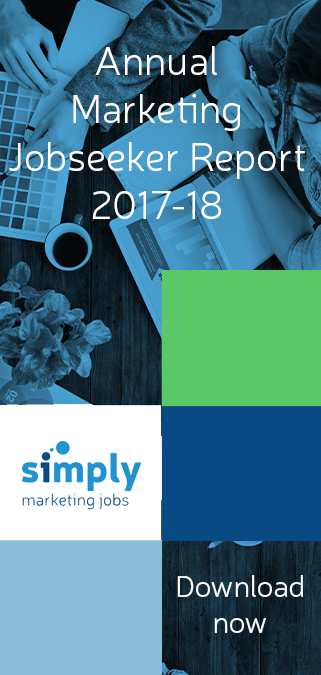With the explosion of new media channels since the 1990s – particularly the ever-growing field of social marketing – it’s becoming easy to irritate customers with ill-timed, irrelevant or just plain intrusive messaging.
Consumers often complain of a lack of transparency in the way marketers operate, say they don’t want to be ‘sold to’ at every opportunity and become distrustful if there’s never anything in marketing campaigns for them. “Not setting up the right value exchange in your relationship with customers is dangerous, and they’ll put up barriers,” warns marketing expert Allister Frost – a former Andrex marketing director and former head of digital marketing strategy for Microsoft. “Did you know that marketing is one of the most hated professions in the world? We need to make marketing noble again.”
Frost was speaking on ‘the psychology of the social web’ at the well-attended Brighton Digital Marketing Festival, sponsored by Pure360 on 13 September. Here he put out a heartfelt plea to the assembled marketers to act responsibly and think more carefully about the marketing activities being undertaken. “Please promise me that you will accept responsibility in the marketing strategies you adopt, and work hard to be transparent, relevant, and always find ways to improve the lives of consumers. We need to be more honourable in the way we market today.”
So what does he suggest to save us all from ill-conceived marketing oblivion? For Frost, successes in the past, and today at the helm of his consultancy Wild Orange Media, have largely been based on marketing campaigns that inspire certain neurological responses in the human brain, that will build genuine brand loyalty and inspire action. A lot of neurological study has focused on what makes consumers tick, and Frost says it’s well worth understanding which emotions you’re aiming to stimulate with which campaigns. To simplify things, Frost ran through seven ways to tap into consumer needs and emotions with marketing, rather than ride roughshod over lines of everyday communication without offering an obvious benefit.
1) Social Proof
Frost made the point that human brains are all hard-wired to ‘want to fit in’ and this means people want to follow trends, be part of a group, mirror other people’s behaviour, belong. Celebrity endorsement has been around forever in this context but social opens up a world of new opportunity. So customer recommendations and reviews hold great value, Frost says, because people will see others have bought and recommended, and will follow suit. Online reviews – ideally with an image of the reviewer – have great power, and clever marketers are making sure they mention how many others have purchased certain products when being flagged on promotion. Special offer coffee machines at £29.99 will sell faster when customers see ‘680 already sold’ next to the click to buy button, he suggests.
2) Contrast
The human brain likes to process different options available to them – and enjoys the moment when the right choice jumps out at them. So Frost gave an example where three laptops were merchandised online next to each other, with the medium-priced one the most likely to be sold. “Make a good deal obvious, but show the contrast,” he says. Something for £800 will seem a bargain against a £1200 version.
3) Scarcity
“If something seems unavailable people will want it more,” says Frost. The very central part of our brain processes the survival instinct – Frost calls this the ‘old brain’ – and here’s where the primeval emotions of fight or flight, avoiding hunger, flinching from a snake are at work. These basic brain reactions can be activated by marketing so if you’re booking flights and the message ‘only 2 seats left at this price’ pops up, you’re more likely to leap forward and purchase. In this scenario, marketing is sharing additional information that will inspire a sale. “By publishing dynamic stock levels you’re helping shoppers make the purchase decision,” says Frost. “You’re telling them to ‘act now to avoid disappointment’. It works, but remember, use the scarcity model in moderation.”
4) Hidden delights
“Small surprises have a big effect,” says Frost. He’s an advocate of “smiles in the mind” – giving your audience the treat of a free gift, or even just something funny to read and share. So it might be clever visual branding that people enjoy ‘getting’ or a free gift that offers something useful. “People are grateful for anything they feel has been thoughtfully provided for them, and this is a valuable currency for future communication.” Frost gave the example of Visit Norway offering a free screensaver image of the Northern Lights, which is an obvious way to build an interested, appreciative audience.
5) Commitments
Frost gave examples where consumers can be manipulated into signing up to things by psychological processes, for instance asking for something big – which might be rejected – followed by asking for something small – which will then be more likely to be accepted. In social marketing asking customers to sign up to a group membership, write a review, sign a petition – are all things that will add long-term value to all parties, but the initial process of gaining commitment needs some thought. “You can activate personas by asking for commitment in the right way,” says Frost. “Often when people have seen themselves commit to a brand, website or service, they will feel affiliated for the long term.”
6) Reciprocity
“People feel a bit indebted when you give them something for free, and you are more likely to then build a longer relationship if they’ve enjoyed something from you,” says Frost. “Indebtedness is very powerful.”
7) Visual stimulus
There’s evidence that wallets with a picture of a baby inside are far more likely to be handed in than those without, says Frost – a classic case of images having the power to stimulate emotions. His point is that good pictures can inspire certain behaviour – a call to action, an impulse purchase, a reason to want to be affiliated with a certain brand or organization. Posts with photos get twice as many likes as posts without an image, we hear anecdotally, but the key is “quality, quality, quality” says Frost.
“I can guarantee that if you do this stuff, brains will be stimulated and results will filter through,” Frost told the Brighton Digital Media Festival audience. “Thinking in this way will turn you into a better marketer than you are today. But you really have to aim to be using these techniques for good, and have nothing to hide. Always think how you will ultimately benefit the customer, and you’re on the right track. Not acting responsibly is dangerous, and you will be found out.”
Allister Frost, managing director of Wild Orange Media was speaking at Brighton Digital Marketing Festival on 13 September 2012.
Browse our marketing jobs today.
Simply Jobs Boards appoints Georgia Cox as new Advertising Agency Sales Manager
Simply Jobs Boards has appointed Georgia Cox as the new Advertising Agency Sales Manager. Formerly a National Account Manager of StepStone, home to generic job boards such as Total Jobs and Jobsite.co.uk, Georgia will head up the sales strategy...
15 interview questions you should be prepared to answer
Today, we’re joined by Ali Schwanke, Founder and CEO of Simple Strat, the marketing agency for companies who are serious about growth. Ali has been on both ends of the stick with regards to job hunting. Here, she speaks from her experience as a recruiter,...
5 slight edge improvements you need to get the job
Today. we're joined by Ali Schwanke, Founder and CEO of Simple Strat, the marketing agency for companies who are serious about growth. In this blog, Ali breaks down what she thinks candidates need to have, to impress the person hiring them. Looking...





